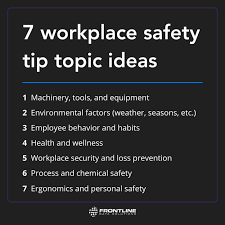The Importance of Flood Resources in Emergency Preparedness
Floods are natural disasters that can have devastating effects on communities, causing damage to property, infrastructure, and posing serious risks to human life. In order to mitigate the impact of floods and ensure the safety of individuals and communities, it is essential to have access to reliable flood resources.
Types of Flood Resources
There are various types of flood resources available to help individuals and communities prepare for, respond to, and recover from floods:
- Emergency Preparedness Guides: These guides provide detailed information on how to create an emergency plan, assemble a disaster supply kit, and stay safe during a flood.
- Flood Maps: Flood maps show areas that are at risk of flooding, helping individuals understand their level of risk and take necessary precautions.
- Alert Systems: Alert systems notify residents about potential flooding events in their area, allowing them to take immediate action to protect themselves and their property.
- Community Support Networks: Local organizations and government agencies often provide support services for individuals affected by floods, including shelter, food assistance, and emotional support.
The Role of Flood Resources in Building Resilient Communities
By utilizing flood resources effectively, communities can enhance their resilience to flooding events. These resources empower individuals with knowledge and tools to prepare for emergencies, respond promptly during a crisis, and recover efficiently after a flood has occurred.
Furthermore, access to reliable flood resources fosters collaboration among community members, emergency responders, and government agencies. This collaborative effort strengthens the overall response capacity of a community and promotes a culture of preparedness that can save lives during a flood emergency.
In Conclusion
Flood resources play a crucial role in enhancing emergency preparedness and response efforts in the face of flooding events. By leveraging these resources effectively and promoting awareness within communities, we can build stronger, more resilient societies that are better equipped to withstand the challenges posed by floods.
Essential Tips for Staying Safe and Prepared During Floods
- Stay informed about flood risks in your area.
- Create an emergency plan for your family and pets.
- Prepare an emergency kit with essential supplies.
- Know evacuation routes and have a communication plan.
- Consider purchasing flood insurance to protect your property.
- Follow instructions from local authorities during a flood warning.
Stay informed about flood risks in your area.
It is crucial to stay informed about flood risks in your area to ensure proactive preparedness and swift response in the event of a flood. By staying updated on local flood maps, weather forecasts, and alert systems, individuals can better understand the potential risks they face and take necessary precautions to protect themselves, their families, and their property. Being informed allows for timely decision-making and can significantly reduce the impact of flooding on both personal safety and community resilience.
Create an emergency plan for your family and pets.
Creating an emergency plan for your family and pets is a crucial step in flood preparedness. By outlining specific actions and communication strategies ahead of time, you can ensure the safety and well-being of your loved ones during a flood event. Include important details such as evacuation routes, designated meeting points, emergency contacts, and necessary supplies for both your family members and pets. Having a well-thought-out plan in place will help you act swiftly and decisively when faced with a flood emergency, minimizing risks and ensuring everyone’s safety.
Prepare an emergency kit with essential supplies.
Preparing an emergency kit with essential supplies is a critical tip when it comes to flood resources. Having a well-stocked emergency kit can make a significant difference in ensuring your safety and well-being during a flood event. Include items such as non-perishable food, water, first aid supplies, flashlights, batteries, and important documents in your kit to help you stay prepared and resilient in the face of a flood emergency.
Know evacuation routes and have a communication plan.
It is crucial to be prepared for flood emergencies by knowing evacuation routes and having a communication plan in place. Understanding the designated evacuation routes in your area can help you navigate to safety swiftly and efficiently in the event of a flood. Additionally, establishing a communication plan with family members, neighbors, and local authorities ensures that everyone stays informed and connected during an emergency, facilitating coordinated responses and ensuring the well-being of all individuals involved.
Consider purchasing flood insurance to protect your property.
Consider purchasing flood insurance to protect your property. Flood insurance can provide financial security in the event of flood damage to your home or belongings. It is important to understand that standard homeowners’ insurance policies typically do not cover flood-related losses, making flood insurance a valuable investment for safeguarding your property against the unpredictable nature of flooding events. By obtaining flood insurance, you can mitigate the financial risks associated with floods and ensure that you have the necessary resources to recover and rebuild in the aftermath of a flood.
Follow instructions from local authorities during a flood warning.
During a flood warning, it is crucial to follow instructions from local authorities without hesitation. Local authorities have the expertise and knowledge to assess the situation accurately and provide guidance on the necessary actions to take to ensure safety and minimize risks. By heeding their instructions promptly, individuals can protect themselves, their loved ones, and their property during a flood emergency. It is essential to stay informed, remain vigilant, and act in accordance with the directives issued by local authorities to stay safe and secure in the face of a flood threat.




